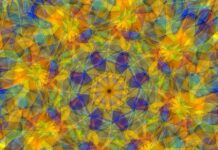AI-Generated Video Content: A Revolution in Creative Expression
In the realm of digital innovation, one of the most captivating and transformative advancements has been the rise of AI-generated video content. With its ability to produce highly realistic and engaging videos, artificial intelligence (AI) is reshaping the landscape of creative expression, entertainment, marketing, and beyond. This technology has ushered in a new era where machines are capable of not only understanding human preferences and aesthetics but also replicating them with remarkable precision.
AI-generated video content is the culmination of decades of progress in the fields of machine learning, computer vision, and graphics. It entails the use of sophisticated algorithms and deep neural networks to simulate human-like understanding of visual elements, enabling AI systems to synthesize videos from scratch or modify existing ones. This encompasses a wide range of possibilities, from generating lifelike animations and special effects to producing entirely original video scenes. The applications are diverse and impactful, spanning industries such as film production, advertising, virtual reality, and more.
The driving force behind AI-generated video content lies in its ability to emulate human-like creativity while offering unprecedented speed and scalability. Traditional video production often requires substantial resources, including a team of skilled professionals, significant time investments, and substantial costs. AI-driven video content creation, on the other hand, can expedite this process by automating various stages of production. Tasks such as scriptwriting, scene composition, character design, and even voiceovers can be accomplished by AI algorithms, considerably reducing the time required to produce high-quality videos.
Beyond efficiency, AI-generated video content holds promise in democratizing creativity. By eliminating some of the barriers to entry that come with traditional video production, AI empowers a more diverse group of individuals and creators to bring their ideas to life. This technology minimizes the dependency on specialized skills, making it possible for novices to craft compelling videos without an extensive background in animation or filmmaking. As a result, creative concepts that might have remained dormant due to resource limitations can now be explored, fueling a new wave of artistic exploration.
The evolution of AI-generated video content has been fueled by the availability of vast datasets and the ever-increasing computing power. Deep learning algorithms, particularly Generative Adversarial Networks (GANs) and Recurrent Neural Networks (RNNs), have played pivotal roles in enhancing the capabilities of AI systems. GANs, for instance, facilitate the generation of content by pitting two neural networks against each other – one generates content, while the other evaluates its realism. This dynamic interplay results in the continuous refinement of the generated content, producing outputs that are progressively more convincing.
Furthermore, the incorporation of RNNs in AI-generated video content has enabled systems to understand and replicate temporal patterns, an essential aspect of video sequences. RNNs excel at processing sequential data, which allows them to predict the next frame in a video based on the preceding frames. This capability is particularly valuable in generating smooth and coherent motion, whether it’s the movement of characters, objects, or even camera angles. The synergy between GANs and RNNs, coupled with the availability of large datasets, has led to substantial leaps in the quality and realism of AI-generated video content.
AI-generated video content finds application in industries where visual storytelling holds significant value. In the realm of entertainment, filmmakers and animators are leveraging AI to streamline certain aspects of their work. For instance, AI algorithms can aid in generating complex visual effects that might have been time-consuming and labor-intensive through traditional means. This doesn’t replace the creativity of artists but rather augments their abilities, enabling them to focus on more intricate design aspects while leaving repetitive tasks to AI.
In the advertising sector, AI-generated video content presents opportunities for creating personalized and engaging advertisements. By analyzing user data and preferences, AI systems can tailor video content to individual viewers, enhancing the likelihood of meaningful engagement. This level of personalization not only captures attention but also strengthens brand-consumer relationships. Furthermore, AI can facilitate rapid content generation, enabling brands to maintain a consistent online presence and respond swiftly to trends and events.
The impact of AI-generated video content is equally profound in the realm of virtual reality (VR) and augmented reality (AR). These immersive technologies rely heavily on realistic visuals to create convincing alternate realities. AI-generated content can significantly contribute to the creation of lifelike virtual environments, populated with characters and objects that behave naturally. This realism enhances the user experience and blurs the line between the virtual and real worlds. Additionally, AI can dynamically adjust VR and AR content based on user interactions, creating adaptive and engaging narratives.
The emergence of AI-generated video content has not been without its challenges and ethical considerations. One primary concern revolves around copyright and intellectual property. As AI systems are trained on vast datasets that include copyrighted material, there is a potential for generated content to inadvertently infringe upon existing copyrights. This raises questions about ownership, licensing, and the originality of AI-generated work. Addressing these challenges requires a reevaluation of copyright laws and the development of frameworks that accommodate the intricacies of AI-generated content.
Another ethical dimension relates to the potential misuse of AI-generated content for misinformation and deepfakes. Deepfakes, in particular, refer to videos that manipulate real footage to replace a person’s likeness with someone else’s, often with malicious intent. This technology can be used to spread false information, impersonate individuals, and undermine trust in visual media. As AI-generated content becomes increasingly sophisticated, there is a pressing need to develop detection tools and raise awareness about the existence of such manipulated content.
In conclusion, AI-generated video content stands as a testament to the remarkable progress made in the field of artificial intelligence. Its ability to replicate human creativity and generate visually compelling videos has broadened the horizons of creative expression, transforming industries ranging from entertainment to advertising and beyond. The symbiotic relationship between AI algorithms like GANs and RNNs, coupled with the availability of extensive datasets, has propelled this technology forward, unlocking new possibilities and redefining the boundaries of visual storytelling. As the technology continues to evolve, it is imperative that society navigates the associated challenges with thoughtfulness and innovation, ensuring that AI-generated video content remains a force for positive change.
The emergence of AI-generated video content has undeniably stirred excitement and intrigue across various sectors. Its rapid advancement, driven by cutting-edge technologies like deep learning and neural networks, has led to an era where machines are not only mimicking human creative abilities but also enhancing them in unprecedented ways. This transformational shift is resonating across industries, influencing how stories are told, products are marketed, and experiences are crafted.
In the realm of entertainment, AI-generated video content has opened doors to innovative storytelling techniques. Filmmakers and content creators are now experimenting with AI tools to assist in scriptwriting, scene creation, and even character development. This collaborative dynamic between human creativity and AI prowess is reshaping cinematic experiences. Directors can now explore scenarios that were once deemed impractical due to logistical challenges, budget constraints, or technical limitations. By harnessing the speed and scalability of AI, entire universes can be conjured, complete with intricate details that captivate audiences.
Furthermore, AI-generated video content has breathed new life into the realm of animation. Traditional animation techniques require painstaking effort and time, demanding artists to meticulously craft every frame. AI-powered animation tools can automate parts of this process, easing the workload while maintaining creative integrity. The nuanced movements of characters and objects can now be achieved through algorithms that study and replicate real-world physics. This dynamic approach to animation is evident in the lifelike characters and fluid motions that AI systems can produce, ushering in a new era of visual appeal and engagement.
Advertising and marketing have also undergone a revolution with the advent of AI-generated video content. Brands can now leverage AI to create personalized advertisements that resonate with individual consumers on a deeper level. By analyzing user data and preferences, AI algorithms can tailor video content to cater to specific demographics, enhancing brand relevance and engagement. Moreover, the speed at which AI can generate content allows companies to stay agile in response to trends and events, capitalizing on opportunities as they arise.
The intersection of AI-generated video content and virtual reality (VR) has unlocked a realm of possibilities. VR experiences rely heavily on immersive visuals to transport users to alternate realities. AI-generated content can enhance these experiences by providing realistic and adaptable environments. Whether it’s the simulation of natural landscapes or the creation of virtual characters that react in lifelike ways, AI’s contribution to VR is reshaping how users engage with digital environments. As AI systems continue to refine their understanding of human behavior, VR experiences will become increasingly personalized, creating unique and memorable journeys for each user.
In the field of education, AI-generated video content has begun to revolutionize how knowledge is imparted. Complex subjects can be simplified through engaging visualizations and animations, catering to diverse learning styles. AI-powered educational videos can adapt to the pace of individual learners, ensuring that concepts are understood before progressing to the next level. This personalized approach to education has the potential to bridge gaps in learning outcomes and make education more accessible to a global audience.
AI-generated video content has also made its mark in the realm of video games. Video game development is a multifaceted process that requires creating intricate environments, characters, and narratives. AI can contribute to each of these aspects, from generating realistic landscapes to providing non-player characters (NPCs) with lifelike behaviors and responses. As AI algorithms become more adept at understanding player interactions, games can offer dynamic experiences that adjust to the player’s choices and preferences, leading to more immersive and captivating gameplay.
The democratization of creativity is another profound impact of AI-generated video content. Traditionally, entering the fields of filmmaking, animation, and design required specialized skills and resources. AI is lowering these barriers by offering tools that empower individuals with limited experience to create compelling content. This inclusivity enables a diverse range of voices and perspectives to contribute to the creative landscape, enriching it with fresh ideas and narratives.
While the benefits of AI-generated video content are significant, there are ethical considerations that warrant attention. One of the prominent concerns is the potential for AI-generated content to perpetuate biases present in the training data. If the training data contains certain biases, AI systems may inadvertently produce content that reinforces stereotypes or inequalities. Ensuring that AI-generated content aligns with ethical standards requires continuous monitoring, transparency, and adjustments to training data and algorithms.
In conclusion, the rise of AI-generated video content is a testament to the power of technology to reshape creative industries and experiences. Its impact spans entertainment, advertising, virtual reality, education, and beyond. The synergy between human creativity and AI’s computational prowess is propelling creative expression to new heights, resulting in captivating narratives, immersive environments, and engaging interactions. As AI technology continues to evolve, the challenge lies in harnessing its potential while safeguarding against potential pitfalls, ensuring that the realm of AI-generated video content remains a force for positive change and innovation.
The emergence of AI-generated video content marks a watershed moment in the intersection of technology and creativity. This burgeoning field holds promise in revolutionizing how stories are told, ideas are communicated, and experiences are shared. By combining the immense capabilities of artificial intelligence with the boundless realm of visual storytelling, AI-generated video content is redefining the possibilities of human expression.
At its core, AI-generated video content represents a convergence of disciplines that were once considered distinct: technology and art. It bridges the gap between the analytical and the imaginative, the logical and the emotional. The algorithms and neural networks that power AI systems are designed to learn from vast datasets, enabling them to decipher intricate patterns and nuances within visual data. This learning process mirrors the way the human brain processes information, albeit at an accelerated pace and on an unprecedented scale.
The marriage of AI and video content transcends mere automation; it is an augmentation of creative potential. Artists, designers, and filmmakers can now collaborate with AI as a co-creator, expanding the horizons of their artistic visions. This partnership allows creators to focus on the ideation and conceptualization of content, leaving the more repetitive and time-consuming aspects to AI algorithms. As a result, AI becomes a conduit for turning abstract concepts into tangible visuals, streamlining the translation of imagination into reality.
In the realm of artistic exploration, AI-generated video content serves as a canvas for experimenting with unconventional concepts and narratives. The technology’s capacity to simulate human creativity means that it can mimic established artistic styles or challenge the norm by amalgamating different genres. This fluidity encourages creators to break free from convention and explore uncharted territories of visual expression. The synergy between human intuition and AI’s computational prowess often yields unexpected and awe-inspiring outcomes, pushing the boundaries of what is aesthetically possible.
Moreover, AI-generated video content plays a pivotal role in preserving cultural heritage and historical artifacts. The ability to reconstruct and restore visual content from fragmented or degraded sources has profound implications for archiving and conservation efforts. By piecing together missing elements and enhancing deteriorated visuals, AI breathes new life into relics of the past. This rejuvenation allows future generations to engage with history in ways that were previously unimaginable, fostering a deeper connection with the collective human narrative.
The democratizing impact of AI-generated video content on storytelling cannot be understated. Historically, producing high-quality videos necessitated substantial resources, limiting access to those with specialized skills and financial means. The advent of AI democratizes the creative process, enabling individuals from diverse backgrounds to harness the power of technology and share their stories with the world. This inclusivity enriches the creative landscape by amplifying voices that might have otherwise gone unheard.
The implications of AI-generated video content extend into the realm of education and knowledge dissemination. Educational institutions and online platforms are increasingly turning to AI to enhance learning experiences. Complex concepts can be simplified through engaging visual aids created by AI algorithms. As a result, subjects that were once considered challenging become accessible and comprehensible to learners of all ages. This shift in the way information is presented has the potential to reshape pedagogical methods, making education more engaging and effective.
AI-generated video content also intersects with the realm of emotion and empathy. While AI lacks human consciousness, its ability to replicate emotional cues and responses can evoke genuine emotional engagement. This has implications in various industries, such as mental health, where AI-generated content can provide therapeutic support through interactive and personalized experiences. Furthermore, AI-generated narratives have the potential to elicit empathy by presenting diverse perspectives and immersive scenarios, fostering a deeper understanding of the human experience.
As AI-generated video content evolves, it is essential to address ethical considerations surrounding authenticity and manipulation. The realistic nature of AI-generated content raises questions about its origin and credibility. The lines between genuine and synthetic content can become blurred, impacting the way audiences perceive reality. Striking a balance between pushing creative boundaries and preserving ethical standards is an ongoing challenge that requires a collaborative effort from creators, technologists, and society at large.
In conclusion, the rise of AI-generated video content signifies a monumental leap forward in the creative landscape. It represents the harmonious convergence of technology and artistry, offering a platform for collaboration between human ingenuity and machine intelligence. The implications span diverse domains, from entertainment and education to cultural preservation and emotional engagement. While the journey into this realm is not without its ethical complexities, the potential for innovation and positive impact is immeasurable. As AI-generated video content continues to evolve, it invites us to reimagine the very essence of creativity and storytelling in a digital age.


















